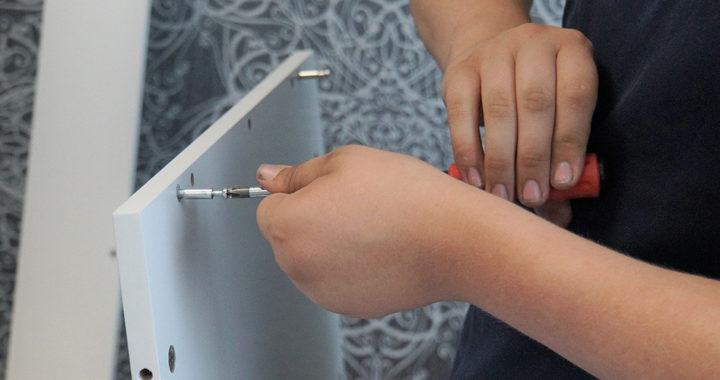Ready-to-assemble furniture or flat-pack furniture is a form of furniture packed and sold in separate components and requires assembly by end-use customers. Flat-pack furnishing products have existed since the 1800s. However, mass production for mass retail has emerged following the rise of companies such as IKEA and Ashley Furnitures during the middle of the 1900s. The entry of retail companies such as Walmart and Amazon in the furniture retail business through their private-label brands has popularized further the mass consumption of ready-to-assemble furnishing and home accessory products.
Ready-to-Assemble Furniture vs. Fully Assembled Furniture
The Pros: Advantages of Ready-to-Assemble Furniture
1. Lower Storage and Transportation Cost
A notable advantage of flat-pack furniture or furnishing products is that they cost less to store and transport. Note it would take five to eight flat-pack study table to occupy the space of a single assembled study table. Ready-to-assemble products are also lightweight because they are made from lightweight materials. Nevertheless, because they occupy less space, warehouses can be maximized to store more items and a shipping vehicle can transport more items per trip, thus benefitting manufacturers and merchants.
2. Special Manufacturing Considerations
Remember that ready-to-assemble furniture or furnishing products are made from lightweight materials. These include engineered wood such as chipboard and medium-density fiberboard, stainless steel, and synthetic plastic polymers such as polyvinyl chloride and polymer laminates. Although these materials are cheaper and have lower overall quality than solid woods and metals, they are more ideal in ready-to-assemble product designs because of their light profile that makes them easier to turn into individual components of a single furniture.
3. Benefits to End-Use Consumers
The reduced costs from manufacturing, storage, and transportation ultimately translate to lowered price points. Note that IKEA has built a business based on a value proposition centered on mass producing affordable and high-quality home furnishing products for the mass market. The company has gained popularity for designing and selling affordable flat-pack furniture and other home accessories. It is apparent that a ready-to-assemble product design is suitable for mass production and mass retail because it lowers production and operation costs.
4. Electronic Commerce Friendly
Another advantage of ready-to-assemble furniture is that it is easier to retail through electronic commerce or online storefronts because of its transportability and reduced transportation cost. Assembled home furnishing products are too bulky and would require bigger vehicles to transport. Flat-pack products are considerably compact and could be transported using average-sized and smaller vehicles. Mass transportation to different destination points is also possible through medium-sized to large-sized vehicles.
5. They Are Environmentally Friendly
It is also important to note that another advantage of flat-pack or ready-to-assemble furniture or furnishing products is that they can be eco-friendly to produce, consume or utilize, and even dispose of. They can be made using sustainably sourced and produced raw materials and even recycled or upcycled products. The entire business model of producing and consuming flat-pack products can also support a circular economic system while still capitalizing on the mass consumer culture to maximize profitability.
The Cons: Disadvantages of Ready-to-Assemble Furniture
1. Requires Customer Assembly
Obviously, a ready-to-assemble product requires assembly from end-use customers. While these products are relatively easier to assemble, some individuals might find it unappealing or difficult to follow provided instructions. Assembling flat-pack furnishing products can also be a tedious task for others, especially for multiple purchases. An example would be a single purchase of living area sets to include a full-sized couch and chairs, a center table, and an entertainment console. Some customers also may not have the right tools to perform the assembly.
2. Issues About Quality and Durability
Note that products from manufacturers and retailers such as IKEA and Walmart have considerably good quality despite using inexpensive materials. But it is important to note that a key disadvantage of ready-to-assemble products is that they could not be compared to the overall built quality and workmanship of high-end furniture. A dining table made from a slab of wood has far superior quality and value than a counterpart made from medium-density fiberboard. Some segments in the furniture market might find flat-pack products unappealing.
3. Limited Designs and Options
Another disadvantage is that there is a limited number of furnishing products and home accessories that can be produced following a ready-to-assemble product design. It is impossible to produce a flat-pack bed frame that follows the preferred design and dimension of a particular customer. Furthermore, similar to fast fashion apparel retail, there is a tendency for different items within a particular product category to look somewhat similar albeit a little different in terms of colors and other designs accents. For individuals and interior designers who are taking into consideration a particular theme, custom-built products are the best options.

